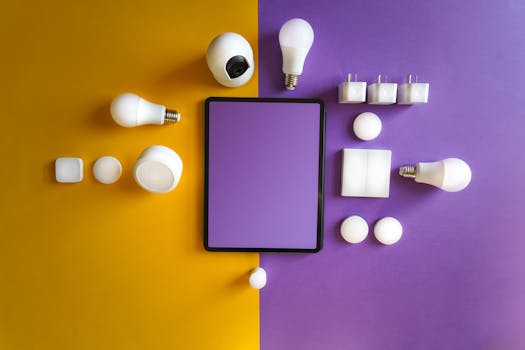
Home Automation in 2025: The Smart Home Ecosystem
Home Automation in 2025: The Smart Home Ecosystem is revolutionizing the way we live and interact with our homes. With the increasing demand for convenience, security, and energy efficiency, home automation has become a vital aspect of modern living.
Introduction to Home Automation
Home automation refers to the use of technology to control and monitor various aspects of a home, including lighting, temperature, security, and entertainment systems. The smart home ecosystem integrates all these systems, allowing homeowners to control and monitor their homes remotely, using smartphones, tablets, or voice assistants.
Key Components of Home Automation
The smart home ecosystem consists of several key components, including:
- Sensors and Detectors: These devices detect and measure various parameters, such as temperature, humidity, and motion, and send signals to the control unit.
- Control Units: These units receive signals from sensors and detectors and send commands to various devices, such as lights, thermostats, and security systems.
- Devices and Appliances: These are the actual devices and appliances that are controlled and monitored, such as lights, thermostats, security cameras, and door locks.
- Communication Protocols: These protocols enable communication between devices and the control unit, such as Wi-Fi, Bluetooth, and Zigbee.
Benefits of Home Automation
The smart home ecosystem offers numerous benefits, including:
- Convenience: Home automation allows homeowners to control and monitor their homes remotely, using smartphones, tablets, or voice assistants.
- Energy Efficiency: Home automation can help reduce energy consumption by optimizing lighting, temperature, and appliance usage.
- Security: Home automation can enhance security by monitoring and controlling doors, windows, and security cameras.
- Comfort: Home automation can improve comfort by adjusting lighting, temperature, and entertainment systems to create a cozy and relaxing atmosphere.
Challenges and Limitations
Despite the benefits of home automation, there are several challenges and limitations, including:
- Interoperability: Different devices and systems may not be compatible, making it difficult to integrate them into a single ecosystem.
- Security Risks: Home automation systems can be vulnerable to cyber-attacks and data breaches, compromising homeowner security and privacy.
- Cost: Home automation systems can be expensive to install and maintain, making them inaccessible to many homeowners.
Future of Home Automation
The future of home automation is expected to be shaped by emerging technologies, such as artificial intelligence, machine learning, and the Internet of Things (IoT). These technologies will enable more advanced and sophisticated home automation systems, such as:
- AI-Powered Home Automation: AI will enable home automation systems to learn and adapt to homeowner behavior, preferences, and habits.
- IoT-Enabled Devices: IoT will enable devices and appliances to communicate with each other and with the control unit, creating a more integrated and seamless ecosystem.
Conclusion
In conclusion, Home Automation in 2025: The Smart Home Ecosystem is a rapidly evolving field, with new technologies and innovations emerging every day. While there are challenges and limitations, the benefits of home automation make it an attractive and desirable aspect of modern living. As the smart home ecosystem continues to grow and develop, we can expect to see more advanced and sophisticated home automation systems, enabling homeowners to live more comfortably, securely, and efficiently.



